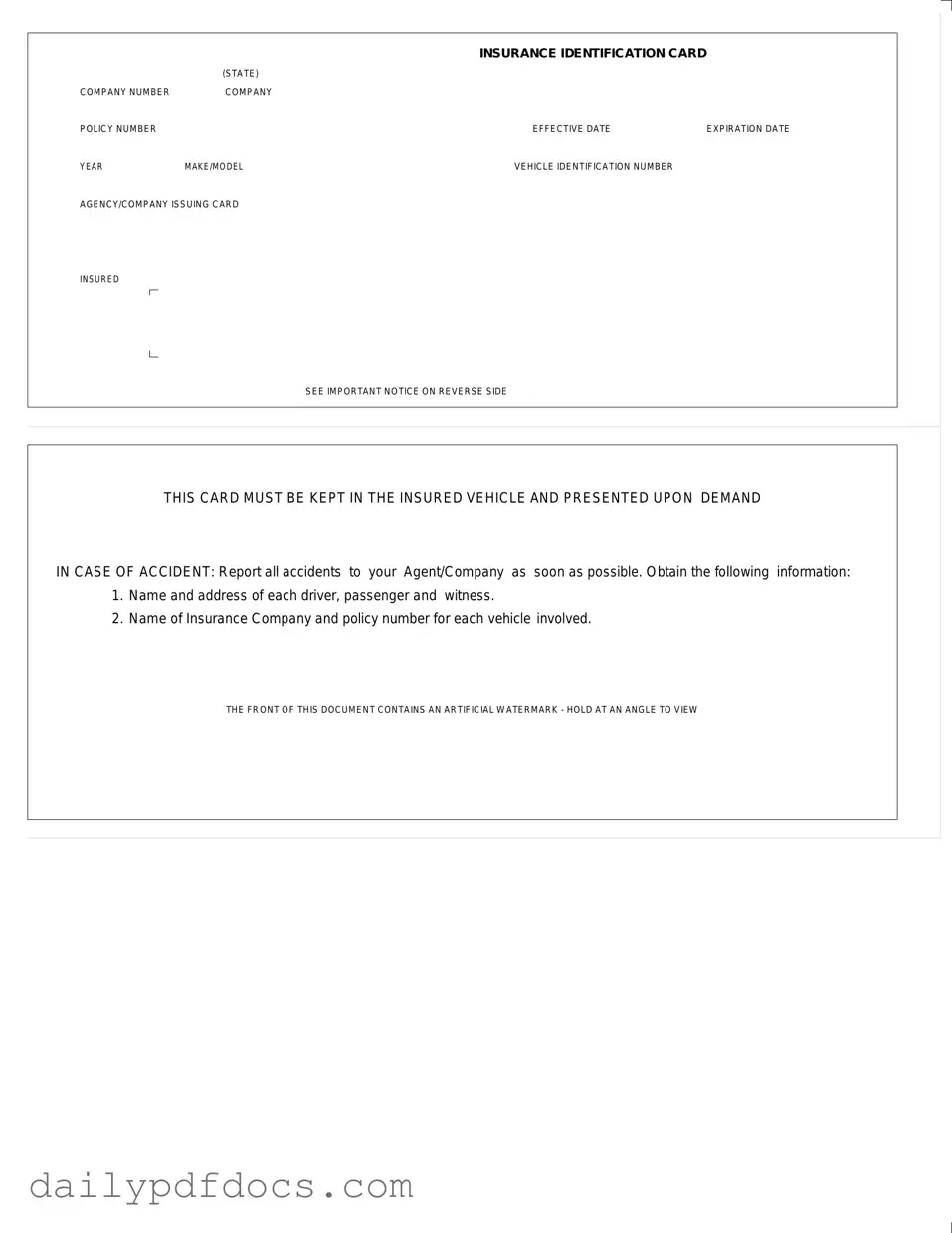What is an Auto Insurance Card?
An Auto Insurance Card is a document that proves you have active insurance coverage for your vehicle. It contains essential information, such as your insurance company’s name, policy number, and the vehicle’s details. You must keep this card in your vehicle at all times.
What information is included on the Auto Insurance Card?
The card includes several key pieces of information: the insurance company’s name, your policy number, effective and expiration dates, the year, make, and model of your vehicle, and the Vehicle Identification Number (VIN). Additionally, the card will show the agency or company that issued it.
Why is it important to keep the Auto Insurance Card in the vehicle?
It is important to keep the Auto Insurance Card in your vehicle because you must present it upon demand in case of an accident or traffic stop. Law enforcement and other parties involved may require proof of insurance to verify that you are covered.
What should I do if I lose my Auto Insurance Card?
If you lose your Auto Insurance Card, contact your insurance agent or company immediately. They can issue a replacement card. It’s essential to have a valid card to avoid penalties or complications if you are stopped by law enforcement.
What should I do if I get into an accident?
In the event of an accident, report it to your insurance agent or company as soon as possible. Collect the names and addresses of all drivers, passengers, and witnesses involved. Also, note the insurance company names and policy numbers for each vehicle involved in the accident.
What does the artificial watermark on the card signify?
The artificial watermark on the Auto Insurance Card is a security feature. To view it, hold the card at an angle. This watermark helps prevent fraud and ensures that the card is genuine.
Can I use a digital version of the Auto Insurance Card?
Some states allow digital versions of the Auto Insurance Card. Check your state’s laws to confirm if a digital card is acceptable. If allowed, ensure that your digital card is easily accessible on your smartphone or device.
What happens if my insurance policy expires?
If your insurance policy expires, you will no longer have valid coverage for your vehicle. It is crucial to renew your policy before the expiration date to avoid any gaps in coverage. Driving without insurance can lead to legal penalties and financial liability.
How can I update the information on my Auto Insurance Card?
To update information on your Auto Insurance Card, contact your insurance agent or company. They can provide a new card reflecting any changes, such as a new vehicle or updated policy details. Always ensure that your card has the most current information.

